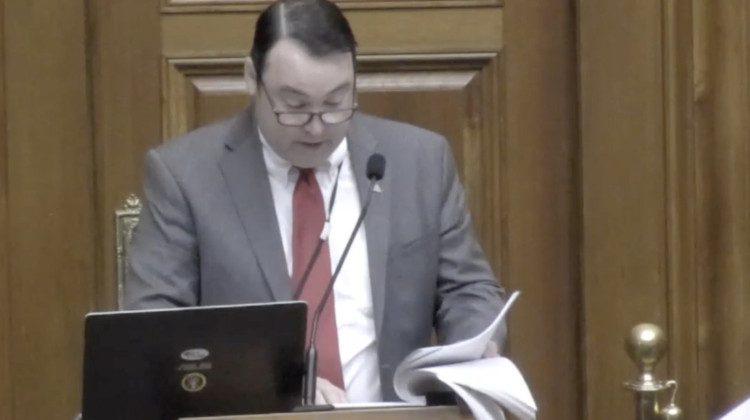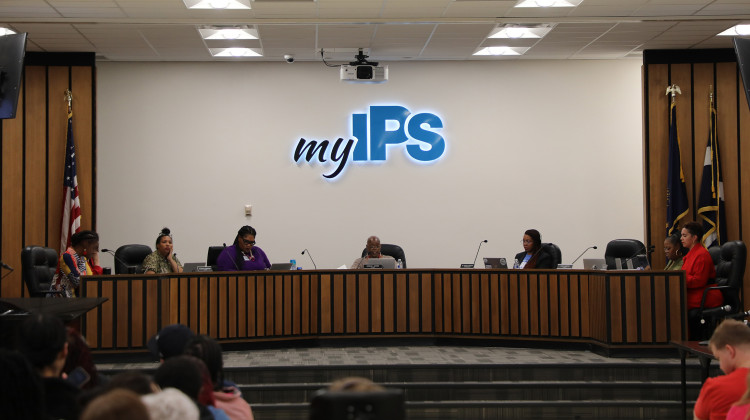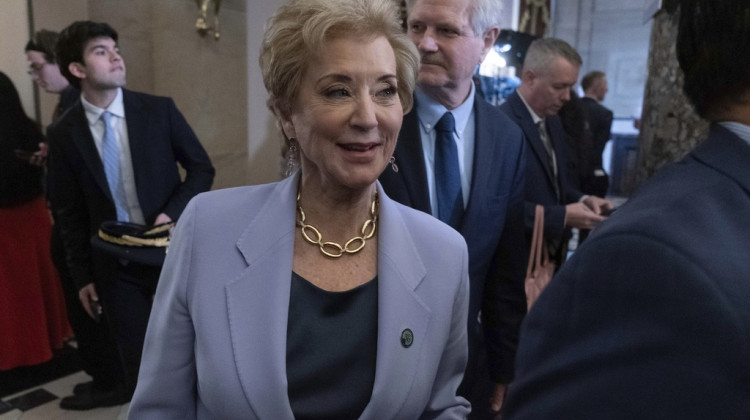
Findings from the state's analysis of student learning data during the pandemic suggests remote learners did not learn at the same rate as their in-person peers last school year.
Jeanie Lindsay/IPB NewsStudents learning primarily in-person during the COVID-19 pandemic last school year benefitted from face-to-face instruction, according to a new analysis of state data shared with the Indiana State Board of Education Wednesday.
State data shows nearly 80 percent of Indiana schools had more than half of their kids learning in-person last school year. The state's analysis of instructional mode and assessment data suggests students going to school remotely didn't make academic progress at the same rate as their in-person peers.
Education Secretary Katie Jenner said it makes clear that students need to be in classrooms.
"So the spoiler alert, in really simple terms, is: in-person instruction really, really, really matters," she said.
The information comes as some kids in the state return to virtual instruction because of new COVID-19 outbreaks forcing schools to go remote – including an entire school district in Scott County and a Brown County elementary school.
READ MORE: Are COVID-19 Vaccines Safe For Kids? Here's What You Need To Know
Join the conversation and sign up for the Indiana Two-Way. Text "Indiana" to 73224. Your comments and questions in response to our weekly text help us find the answers you need on COVID-19 and other statewide issues.
While most kids learned primarily in-person last school year, the data also reveals some student groups weren't in-person as often than others.
Maggie Paino is the director of accountability for the Indiana Department of Education. She said less than half of Indiana's Black students learned primarily in-person last school year.
"All other student groups had more than 50 percent in-person as their primary mode of instruction, outside of our Black student groups," Paino said.
The data is incomplete, however. The mode of instruction data was based on 2020-2021 daily attendance records, but Paino said the analysis is missing about 15 percent of school records statewide because of technical issues. Board member William Durham pointed out that a significant share – roughly 20 percent – of the instructional data for Black students was missing, which could impact the findings.
Paino also cautioned the board about some of the limitations of the analysis because of other factors in and out of schools. She said the instruction data does not consider factors like student engagement, local attendance policies, or the platforms used for remote students.
But the findings did prompt board members to raise additional questions about what the state's role is in keeping kids in school as the pandemic continues.
Board members Erika Dilosa, B.J. Watts and David Frietas all pointed out some schools were not allowed to operate in person last school year at times because of local health orders.
Freitas said he wants more data about the relationship between local health department policies and student learning, and information about how the board might respond in case more schools are forced to close their doors as the delta variant of COVID-19 continues to spread.
The Indiana Department of Education said it plans to share more detailed findings and analyses with school leaders later this week.
Contact reporter Jeanie at jlindsa@iu.edu or follow her on Twitter at @jeanjeanielindz.
 DONATE
DONATE





 View More Articles
View More Articles



 Support WFYI. We can't do it without you.
Support WFYI. We can't do it without you.